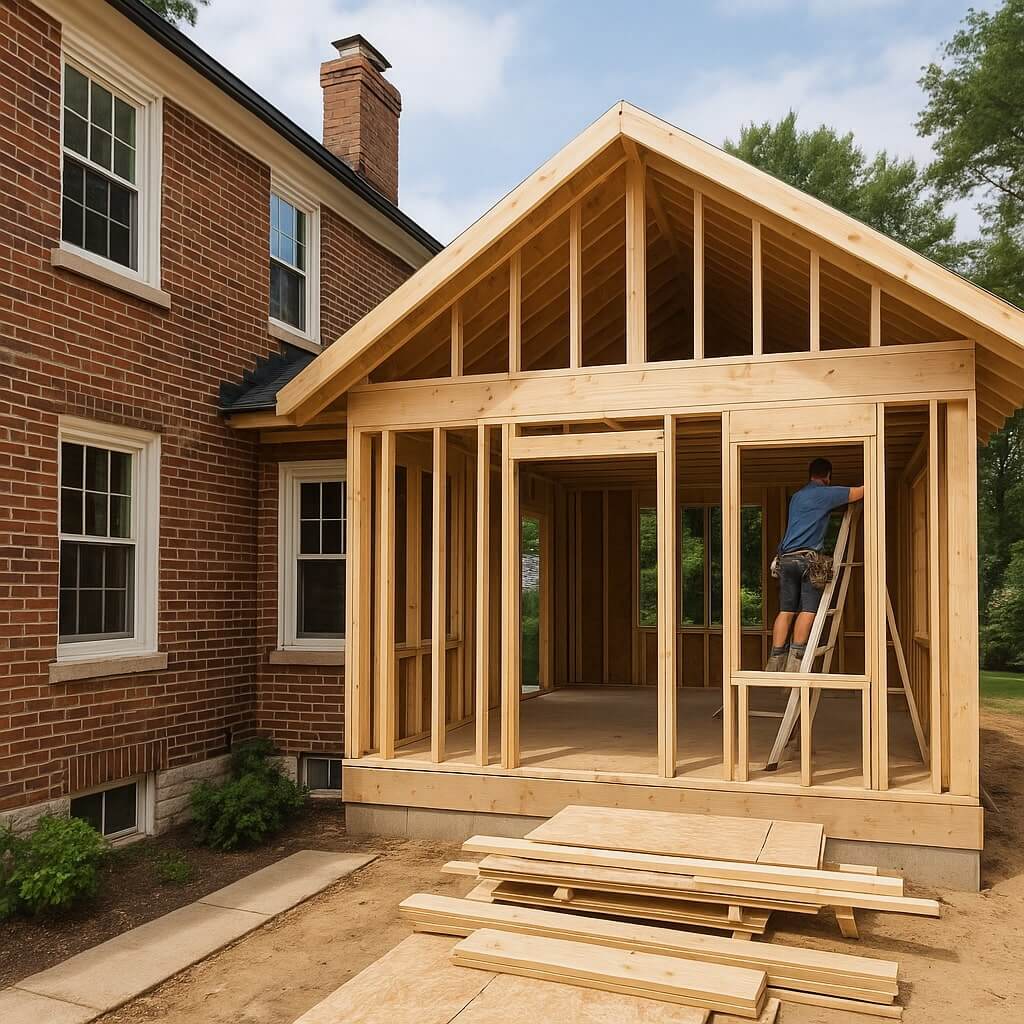When you’re planning a new addition to your home in St. Louis, it’s essential to approach the process methodically. Start by clearly defining your goals and needs, as this sets the foundation for every subsequent step. Next, consider your budget and familiarize yourself with local building codes. But before you rush ahead, there’s a thoughtful design plan you need to create. Understanding how to choose the right contractor can make all the difference.
Key Takeaways
- Define the purpose and needs of your home addition, considering user activities and desired functionality.
- Set a realistic budget, accounting for design, materials, and labor costs.
- Research local building codes and obtain necessary permits to ensure compliance.
- Create a detailed design plan that optimizes space and enhances flow between areas.
- Choose a reliable contractor with relevant experience and clear communication for the project.
Define Your Goals and Needs
What do you envision when you think about your home addition? Start by defining your space requirements.
Consider how many people will use the new area and what activities will take place. This information guides your design. A functional layout is essential; it guarantees that every square foot is utilized effectively.
Understanding the number of users and their activities is crucial for an effective design that maximizes every square foot.
Think about flow, accessibility, and how it integrates with your existing structure. Visualize the furniture arrangement and the natural light you’d like to incorporate.
Prioritize your needs, whether it’s a cozy family room or a spacious kitchen. Your goals will drive the design process, transforming your vision into reality.
Set a Realistic Budget
Setting a realistic budget for your home addition is essential to guarantee the project stays on track and within financial limits. Start with a cost breakdown to identify key expenses. Here are some budgeting tips to help you:
| Expense Category | Estimated Cost |
|---|---|
| Design & Permits | $1,000 – $5,000 |
| Materials | $10,000 – $30,000 |
| Labor | $5,000 – $20,000 |
Research Local Building Codes and Regulations
Before you break ground on your home addition, it’s crucial to research local building codes and regulations, as they can greatly impact your project.
Start by checking the specific zoning laws in your area; they dictate what you can build and where. You’ll likely need to apply for building permits, which guarantee your addition complies with safety standards and local guidelines.
Ignoring these regulations can lead to costly fines or even project delays. By understanding these requirements early on, you’ll streamline the process and create a solid foundation for your home addition, aligning your vision with legal necessities.
Create a Design Plan
As you begin creating a design plan for your home addition, it’s essential to balance your vision with practical considerations.
Focus on how to optimize space while integrating appealing color schemes that harmonize with your existing home. Here are four key elements to include in your design plan:
- Functionality: Identify how you’ll use the new space—living, working, or entertaining.
- Flow: Guarantee seamless movement between old and new areas.
- Aesthetics: Choose color schemes that enhance both the addition and the overall home.
- Budget: Establish a clear budget to guide your design decisions.
This approach will set a solid foundation for your project.
Choose the Right Contractor
Finding the right contractor is essential for the success of your home addition project.
Begin by evaluating contractor experience; look for a proven track record in similar projects. Ask for references and check reviews to gauge reliability and quality.
Discuss your project timeline upfront—make sure they can meet your deadlines without compromising quality.
Request detailed estimates that break down costs and timelines; clarity here can prevent future disputes.
Finally, trust your instincts. A good rapport with your contractor fosters open communication, making the entire process smoother.
Choosing wisely won’t only enhance your home but also guarantee a seamless construction experience.
Conclusion
By following these five key steps, you’ll streamline the process of designing your home addition in St. Louis. Clearly defining your goals, budgeting wisely, and understanding local regulations will set a solid foundation. Crafting a thoughtful design plan enhances both flow and aesthetics, while selecting the right contractor guarantees your vision comes to life efficiently. Embrace this journey with confidence, and soon you’ll be enjoying your new space tailored perfectly to your needs.

